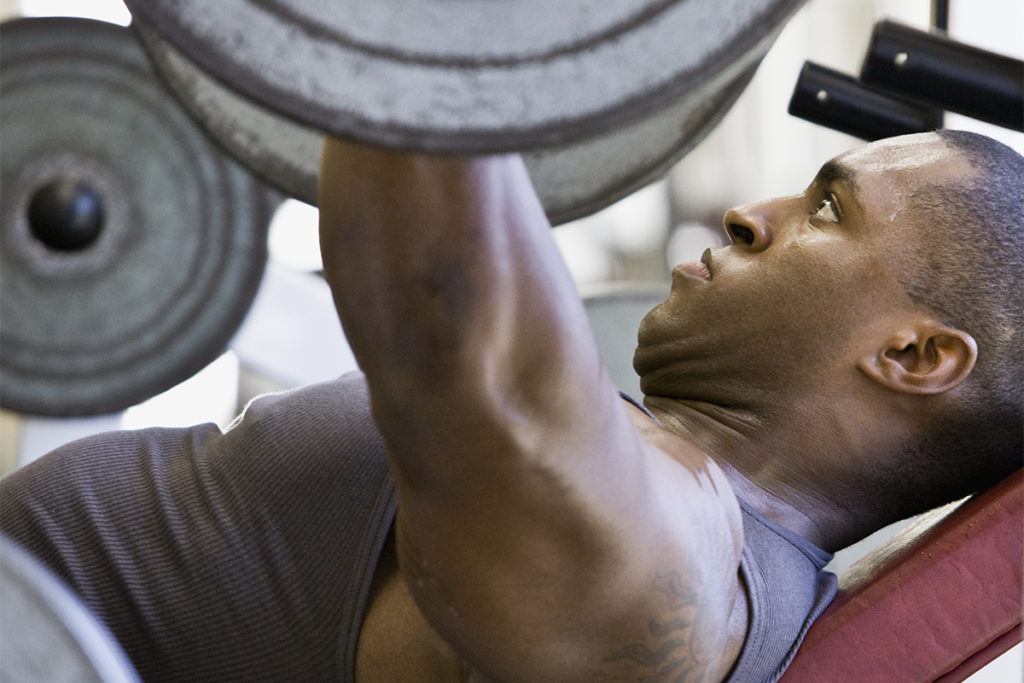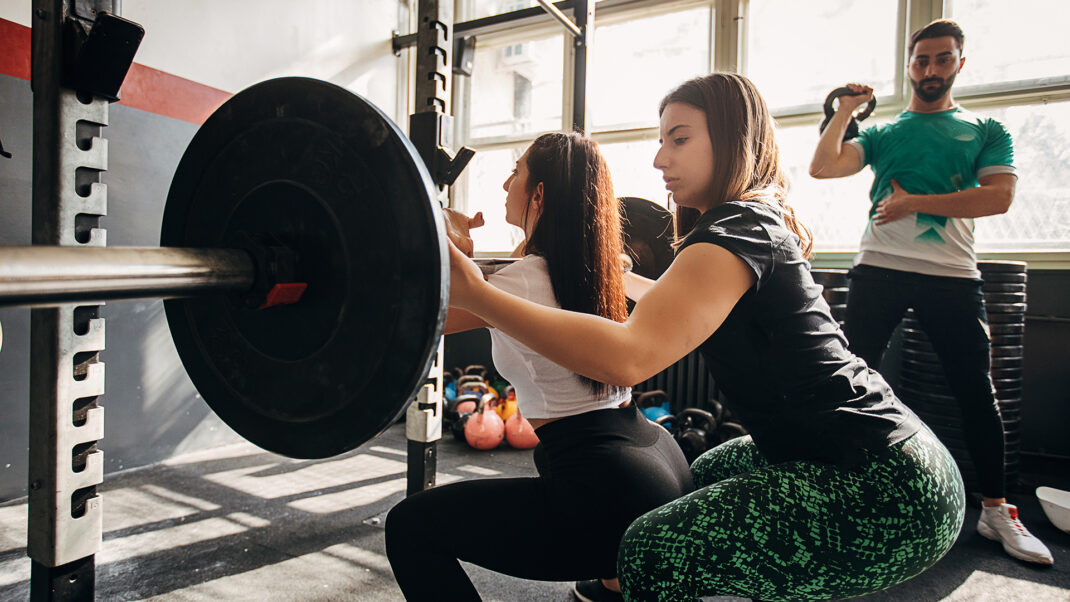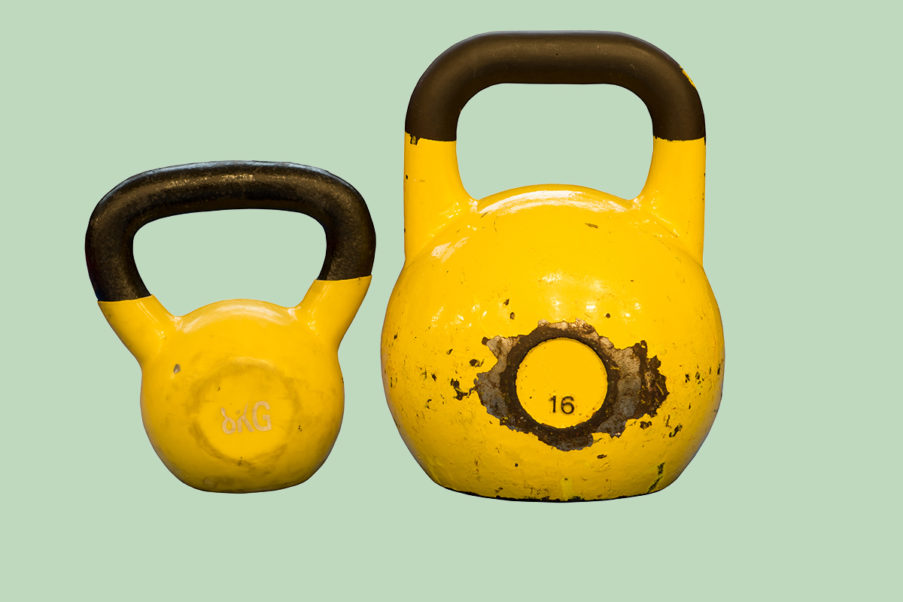Muscle Hypertrophy: Hormonal Responses and Physiological Mechanisms
Learn why muscle hypertrophy is more than just big muscles!

Introduction: Hypertrophy Matters!
Personal trainers and fitness professionals often need to discuss the importance of muscle hypertrophy (i.e., diameter size increase of muscle) with clients. All too often, clients become preoccupied with the singular aspect of hypertrophy commonly observed with exercise enthusiasts who are attempting to enhance their body’s muscular development, as in the sport of bodybuilding. However, it is purposeful to educate clients that many chronic diseases, including cardiovascular disease, chronic obstructive pulmonary disorder, cancer, sepsis (i.e., the body responding improperly to an infection), and burns, have muscle-wasting properties (Lim et al. 2022). Additionally, Lim and colleagues (2022) submit that a lifestyle of reduced physical activity will also be manifested in muscle atrophy (i.e., muscles wasting away). Therefore, targeting the mechanisms that favor muscle growth is a pertinent goal for individuals ranging from clinical clients to competitive athletes. This review will highlight recent advances in hormonal and physiological factors of muscular hypertrophy research. Additionally, at the end of the article the resistance training recommendations Position Stand to maximize muscle hypertrophy in an athletic population are presented, from the International Universities Strength and Conditioning Association (2021).
Understanding the Role of Hormones for Muscular Growth and Repair
Resistance exercise elicits several hormonal responses that contribute to hypertrophy, power, strength and muscular endurance. The acute elevations in circulating blood hormone concentrations are likely to interact with receptors on either the target muscle tissue cell membrane or specific receptors located within the target muscle tissue (Kramer et al. 2020). These interactions with the receptor molecule ultimately lead to an increase in muscle cell size. To promote muscular growth, personal trainers manipulate program training variables such as intensity, volume, rest, contraction speed, frequency of the stimuli, exercise selection and sequence (Kramer & Ratamess 2007). In addition, the overload progression and specificity of the exercise stimulus to activate muscle motor units, are central to muscular fitness adaptations over time.

What are the Essential Hormones that Contribute to Muscular Growth and Repair?
Hormones are responsible for the complex communication network that regulates cellular signaling for protein synthesis—the construction of new proteins from amino acid ‘building blocks’—in muscle. The key ‘anabolic’ (e.g., the building process related to increasing protein synthesis and muscle mass) hormones involved in muscle growth and repair are testosterone, growth hormone and insulin-like growth factor-1 (IGF-1). Testosterone is the primary hormone that increases protein synthesis in women and men, while simultaneously diminishing some of the catabolism (e.g., tissue breakdown) in muscle. Testosterone also stimulates the production of growth hormone and IGF-1, which then act synergistically towards promoting muscle hypertrophy. Cortisol is ‘catabolic’ hormone that has an inhibitory effect on amino acid uptake in muscle and thus inhibition of protein synthesis. As a quick reminder, the construction of muscle proteins requires that the building blocks for those proteins—the amino acids—are first transported into the muscle cells. By decreasing amino acid uptake, cortisol can blunt protein synthesis. But cortisol shouldn’t be thought of as “bad”; this hormone regulates glucose metabolism for energy, which helps to fight inflammation, while also assisting the body’s immune system function. Present research findings reveal that these acute resistance training-induced hormonal elevations contribute modestly to the overall muscle hypertrophy outcome (Fink Schoenfeld & Nakazato 2017). Importantly, new research indicates three specific mechanisms that are primarily responsible for muscle hypertrophy (Gligoroska et al. 2022).
Introducing the Three Physiological Mechanisms Stimulating Skeletal Muscle Hypertrophy
Muscle hypertrophy occurs when protein synthesis is greater than the breakdown of muscle proteins. The mechanisms underlying muscle hypertrophy are now known to be based on three factors: mechanical tension (load), metabolic stress, and exercise-induced muscle damage (Gligoroska et al. 2022).
Physiological Mechanism #1 for Hypertrophy: Mechanical Tension
Most investigations on muscle hypertrophy indicate that mechanical tension (i.e., load) is the primary initiator for the adaptive muscle hypertrophy response during and after exercise training. Gligoroska and colleagues (2022) submit that mechanical tension is probably also the most important factor in exercise-induced muscle hypertrophy. The authors explain there are mechanosensors within muscle that are sensitive to the magnitude and the duration of the loading of muscle. These specialized receptors directly instruct intracellular signaling to bring about hypertrophic adaptations. Research findings, in carefully designed animal model studies, shows that eccentric contractions have the greatest effect on this cell signaling, while passive stretch appears to be the least effective (Gligoroska et al. 2022). Modern theories propose that the mechanical tension that occurs during exercise training causes structural and chemical changes, at the molecular and cellular levels, in muscle cells that result in accelerated protein synthesis (Gligoroska and colleagues 2022).

Physiological Mechanism #2 for Hypertrophy: Metabolic Stress
Metabolic stress is maximized during exercise being powered by anaerobic glycolysis (breakdown of glucose without the presence of oxygen). This metabolic stress physiological mechanism happens when resistance exercise bouts last from 15 to 120 seconds (Gligoroska et al. 2022). Gligoroska et al. (2022) elucidate that the anaerobic glycolysis leads to an accumulation of several byproducts, including lactate, hydrogen ions, inorganic phosphate, and creatine, which all appear (together) to stimulate the hypertrophic adaptive effects in muscle. It should be noted that the low levels of oxygen, due to the anaerobic glycolysis, also contributes to metabolic stress. From a practical application perspective, Gligoroska and fellow researchers highlight research indicating that traditional bodybuilding routines, which involve performing multiple sets of 8 to 12 repetitions per set with relatively short rest between sets, have been found to increase metabolic stress to a much greater degree than higher-intensity regimens (e.g. those that use higher loads, fewer reps and with longer rest periods) typically employed by powerlifters. Therefore, the scientific evidence shows that training volume, exercise load, number of repetitions, and short duration of rest between sets are the important factors to induce metabolite stress (and thus a hypertrophy adaptation).
Physiological Mechanism #3 for Hypertrophy: Exercise-Induced Muscle Damage
Intense exercise, or unaccustomed exercise, may cause damage to skeletal muscle; referred to as exercise-induced muscle damage. Following unaccustomed or intense exercise, there is a time period of muscle protein synthesis and muscle remodeling (i.e., muscle fiber regenerating) of the targeted muscles during recovery. It is hypothesized that muscle damage occurs to several macromolecules in muscle as well as to several structural elements within skeletal muscle. The body responds to the muscle damage with an inflammatory response; which is a fundamental response of the body from damage or injury. The body sends some specialized macrophage cells to the target muscles to remove damaged tissue components and prompts various growth factors to promote the synthesis of new proteins.

What are the Resistance Training Recommendations to Maximize Muscle Hypertrophy in an Athletic Population: Position Stand of the IUSCA?
- The following are the Position Stand recommendations to maximize muscle hypertrophy in an athletic population from the International Universities Strength and Conditioning Association (2021). For accuracy of message, QUOTED statements (which are italicized) from this Position Stand are provided. The authors of this Position Stand are the leading scientists from around the world on muscle hypertrophy. Please modify these training variables, appropriately to address the fitness levels of your clients.
- Load: Individuals can achieve comparable muscle hypertrophy across a wide spectrum of loading zones. There may be a practical benefit to prioritizing the use of moderate loads for the majority of sets in a hypertrophy-oriented training program.
- Volume: A dose of approximately 10 sets per muscle per week would seem to be a general minimum prescription to optimize hypertrophy, although some individuals may demonstrate a substantial hypertrophic response on somewhat lower volumes. Evidence indicates potential hypertrophic benefits to higher volumes, which may be of particular relevance to underdeveloped muscle groups.
- Frequency: Significant hypertrophy can be achieved when training a muscle group as infrequently as once per week in lower to moderate volume protocols; there does not seem to be a hypertrophic benefit to greater weekly per-muscle training frequencies provided set volume is equated. It may be advantageous to spread out volume over more frequent sessions when performing higher volume programs. A general recommendation would be to cap per-session volume at ~10 sets per muscle and, when applicable, increase weekly frequency to distribute additional volume.
- Rest Interval: As a general rule, rest periods should last at least 2 minutes when performing multijoint exercises. Shorter rest periods (60-90 secs) can be employed for single-joint and certain machine-based exercises.
- Exercise Selection: Hypertrophy-oriented resistance training programs should include a variety of exercises that work muscles in different planes and angles of pull to ensure complete stimulation of the musculature. Programming should employ a combination of multi- and single-joint exercises to maximize whole muscle development. Where applicable, focus on employing exercises that work muscles at long lengths.
- Set End Point: Novice lifters can achieve robust gains in muscle mass without training at a close proximity to failure. As an individual gains training experience, the need to increase intensity of effort appears to become increasingly important. Highly trained lifters may benefit from taking some sets to momentary muscular failure. In such cases, its use should be employed somewhat conservatively, perhaps limiting application to the last set of a given exercise. Older athletes should employ failure training more sparingly to allow for adequate recovery. Periodizing failure training may be a viable option, whereby very high levels of effort are employed liberally prior to a peaking phase, and then followed by a tapering phase involving reduced levels of effort.
Final Thoughts
Skeletal muscle plays an essential role in metabolic health, physical function and athletic performance. Low muscle mass is associated with several chronic diseases in healthy and clinical populations. As a preventive intervention, resistance exercise provides a desirable opportunity to favorably affect anabolic processes in muscle to promote health and combat these diseases. It is now known that the main mechanisms that promote muscular hypertrophy are mechanical tension (load), exercise-induced muscle damage and metabolic stress. Having a strong basis of skeletal muscle hypertrophy mechanisms and new recommendations for hypertrophy program design provides a personal trainers with the academic tools and skills to design optimal training programs for the needs of their clients…You’ve got this!
See also: Mycoprotein for Muscle Growth
Bio
Len Kravitz, PhD, CSCS is a professor and program coordinator of exercise science at the University of New Mexico where he received the Presidential Award of Distinction and the Outstanding Teacher of the Year award.
With Hormone Responses to Exercise, is it better to do Free Weight or Machine-based Training?
Both free weight and machine-based training can provide a substantial stimulus for acute increases in concentrations of circulating hormone factors including growth hormone, testosterone and cortisol.
In an original recent investigation, Shaner et al. (2014) completed a study to examine the effect of resistance exercise selection (free weight vs. machine weight, involving similar multi-joint movements) on the acute hormonal response to exercise. With their approach, the authors compared the hormonal (testosterone, growth hormone and cortisol) responses of the back squat (free weight) and leg press (machine weight) exercises. Ten resistance-trained men completed 6 sets of 10 repetitions of leg press or back squat at the same relative intensity separated by 1 week. Interestingly, results indicated that growth hormone, testosterone and cortisol were all elevated more with the back squat (free weight) as compared to the leg press (machine weight). Knowing this acute training outcome, the authors suggest a long-term training study on this methodology is warranted, to see if the chronic effects of free weight training are superior for hypertrophy and strength development.
Are There Sex Differences in Adaptations to Resistance Training?
It has been well-established that both females and males can increase muscle size and strength in response to resistance training. It appears that men have a greater absolute increase in strength than women (Roberts Nuckols & Kriege 2020). However, the research denotes that females and males adapt to resistance training with similar relative (e.g., when normalized for body weight) magnitudes for hypertrophy and lower-body strength (Roberts Nuckols & Kriege 2020). Intriguingly, females appear to have a larger relative magnitude increase in upper-body strength, as compared to men. Further research is needed to identify and clarify why this sex difference occurs only in upper body strength, and whether the differences are due to muscular, neural, or motor learning factors.
References
Gligoroska, J.P., Manchevska, S., Petrovska, S. et al. 2022. Physiological mechanisms of muscle hypertrophy. Research in Physical Education, Sport and Health, 11 (1), 153-160.
Kraemer, W.J. and Ratamess, N.A. 2007. Hormonal Responses and Adaptations to Resistance Exercise and Training, Sports Medicine, 35 (4), 339-361.
Kraemer, W.J., Ratamess, N.A., Hymer, W.C. et al. 2020. Growth hormone(s), testosterone, insulin-like growth factors, and cortisol: Roles and integration for cellular development and growth with exercise, Frontiers in Endocrinology, 11, article 33. doi: 10.3389/fendo.2020.00033
Lim, C., Nune, E.A., Currier, B.S. et al. 2022. An evidence-based narrative review of mechanisms of resistance exercise–induced human skeletal muscle hypertrophy, Medicine and Science in Sports and Exercise, 54 (9), 1546-1559.
Roberts, B.M., Nuckols, G. and Kriege, J.W. 2020. Sex differences in resistance training: A systematic review and meta-analysis, Journal of Strength and Conditioning Research, 34 (5), 1448-1460.
Schoenfeld, B.J., Fisher, J.P., Grgic, J. et al. 2021. Resistance training recommendations to maximize muscle hypertrophy in an athletic population: Position stand of the IUSCA. International Journal of Strength and Conditioning, 1 (1) doi.org/10.47206/ijsc.v1i1.81
Shaner, A.A., Vingren, J.L., Hatfield, D. L. et al. 2014. The acute hormonal response to free weight and machine weight resistance exercise. Journal of Strength and Conditioning Research, 28 (4), 1032-1040.





